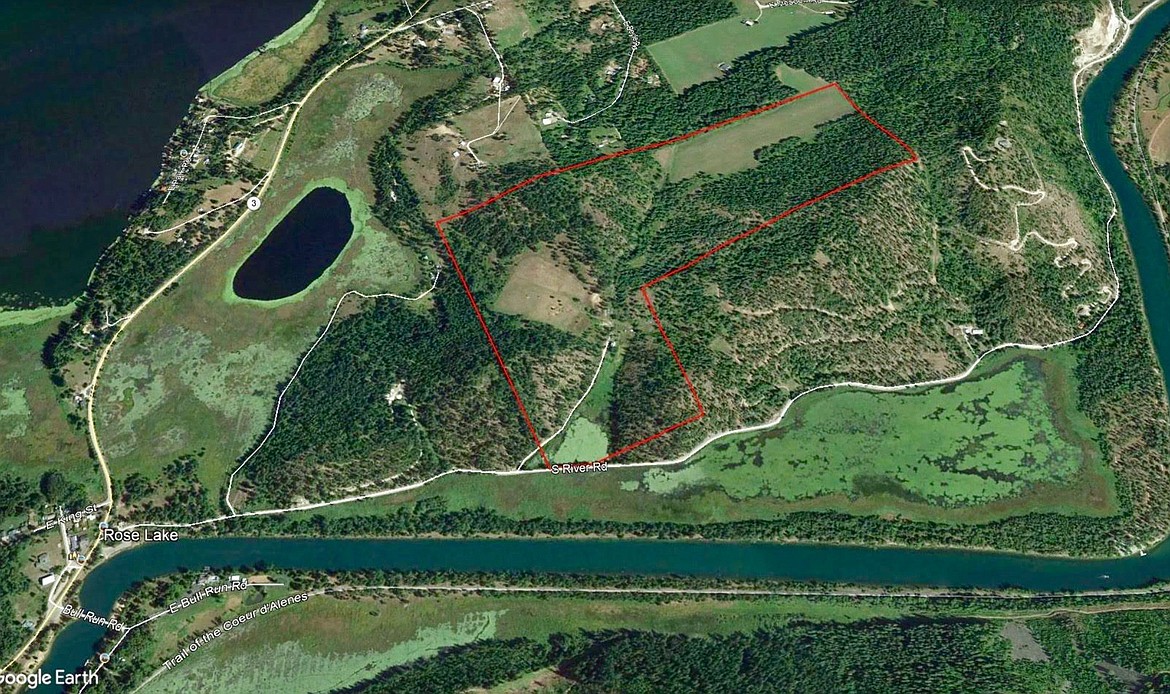EPA exploring ideas for newly purchased property
ROSE LAKE — A 160-acre parcel of land near Rose Lake was purchased last month by the Coeur d’Alene Work Trust (the Trust) under the direction of the Environmental Protection Agency (EPA).
The purchased land is in the Dudley Reach area, southwest of Porters Lake and while there aren’t any concrete plans for the land yet, there are several different options that are being looked at by both entities.
According to a recent release from the EPA, one of the more prevalent ideas for the land revolves around a special pilot project.
The pilot project will examine and evaluate the potential effectiveness of various Lower Basin cleanup technologies such as, but not limited to, capping in-place, dredging, dredging/capping hybrid, and weirs to reduce erosion rates.
The EPA and the Trust are gathering information in the Dudley Reach area to determine which pilot project or projects to set in motion and depending on which pilot project is selected, it may generate some waste material that will need to be consolidated and placed in a safe area away from people.
The area is one of the most heavily impacted areas in terms of contamination, and potential for waste removal and development.
And according to EPA project manager Patrick Hickey, plans to complete work in the area have been discussed since the 2003 Record of Decision (ROD).
Part of that ROD included reaching out to the residents in the surrounding communities and making them aware that waste consolidation areas (WCAs) could be built in some of these areas throughout the Bunker Hill Superfund Site, which are vital to the remediation process.
The EPA also recently announced that they were looking for community input regarding potential sites for WCAs in the Lower Coeur d’Alene River Basin area.
When WCAs are full, they are capped with clean material, monitored, maintained and are engineered and managed to contain the contamination safely over time.
Any waste material that would be put into a WCA on the newly purchased land, would come from nearby cleanup sites in the Lower Basin area.
According to Jim Finlay, a project manager with the Trust, having WCAs near potential project areas is vital because it cuts down on the distance that contaminated materials need to be moved, which helps with dust pollution and fuel costs.
But even with that knowledge, there are no set plans in place and Finlay wants to make sure that people who live in the area know that.
“I just want to reiterate that,” Finally said. “We went out and began putting feelers out for property to see if we could find some and use it for an equipment lay-down and if needed a WCA, but that’s three-four years down the road and we will be working with the surrounding property owners before any of that happens.”
Once a specific pilot project is selected, the EPA and the Trust will know how much waste, if any, it will generate, and what size any WCA would need to be.
The pilot project will likely be constructed in 2024 or 2025, and if the pilot project generates waste, a WCA would need to be constructed and prepared the preceding year to be ready to accept waste in 2024.
To learn more about the process for siting waste consolidation areas in the Lower Basin, visit www.epa.gov/superfund/bunker-hill, or call Jim Finlay with the Coeur d'Alene Trust at 208-783-0222.

